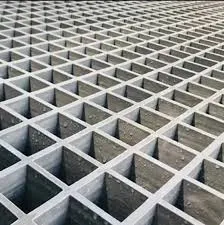
-
 Afrikaans
Afrikaans -
 Albanian
Albanian -
 Amharic
Amharic -
 Arabic
Arabic -
 Armenian
Armenian -
 Azerbaijani
Azerbaijani -
 Basque
Basque -
 Belarusian
Belarusian -
 Bengali
Bengali -
 Bosnian
Bosnian -
 Bulgarian
Bulgarian -
 Catalan
Catalan -
 Cebuano
Cebuano -
 China
China -
 China (Taiwan)
China (Taiwan) -
 Corsican
Corsican -
 Croatian
Croatian -
 Czech
Czech -
 Danish
Danish -
 Dutch
Dutch -
 English
English -
 Esperanto
Esperanto -
 Estonian
Estonian -
 Finnish
Finnish -
 French
French -
 Frisian
Frisian -
 Galician
Galician -
 Georgian
Georgian -
 German
German -
 Greek
Greek -
 Gujarati
Gujarati -
 Haitian Creole
Haitian Creole -
 hausa
hausa -
 hawaiian
hawaiian -
 Hebrew
Hebrew -
 Hindi
Hindi -
 Miao
Miao -
 Hungarian
Hungarian -
 Icelandic
Icelandic -
 igbo
igbo -
 Indonesian
Indonesian -
 irish
irish -
 Italian
Italian -
 Japanese
Japanese -
 Javanese
Javanese -
 Kannada
Kannada -
 kazakh
kazakh -
 Khmer
Khmer -
 Rwandese
Rwandese -
 Korean
Korean -
 Kurdish
Kurdish -
 Kyrgyz
Kyrgyz -
 Lao
Lao -
 Latin
Latin -
 Latvian
Latvian -
 Lithuanian
Lithuanian -
 Luxembourgish
Luxembourgish -
 Macedonian
Macedonian -
 Malgashi
Malgashi -
 Malay
Malay -
 Malayalam
Malayalam -
 Maltese
Maltese -
 Maori
Maori -
 Marathi
Marathi -
 Mongolian
Mongolian -
 Myanmar
Myanmar -
 Nepali
Nepali -
 Norwegian
Norwegian -
 Norwegian
Norwegian -
 Occitan
Occitan -
 Pashto
Pashto -
 Persian
Persian -
 Polish
Polish -
 Portuguese
Portuguese -
 Punjabi
Punjabi -
 Romanian
Romanian -
 Russian
Russian -
 Samoan
Samoan -
 Scottish Gaelic
Scottish Gaelic -
 Serbian
Serbian -
 Sesotho
Sesotho -
 Shona
Shona -
 Sindhi
Sindhi -
 Sinhala
Sinhala -
 Slovak
Slovak -
 Slovenian
Slovenian -
 Somali
Somali -
 Spanish
Spanish -
 Sundanese
Sundanese -
 Swahili
Swahili -
 Swedish
Swedish -
 Tagalog
Tagalog -
 Tajik
Tajik -
 Tamil
Tamil -
 Tatar
Tatar -
 Telugu
Telugu -
 Thai
Thai -
 Turkish
Turkish -
 Turkmen
Turkmen -
 Ukrainian
Ukrainian -
 Urdu
Urdu -
 Uighur
Uighur -
 Uzbek
Uzbek -
 Vietnamese
Vietnamese -
 Welsh
Welsh -
 Bantu
Bantu -
 Yiddish
Yiddish -
 Yoruba
Yoruba -
 Zulu
Zulu
Exploring the Benefits of FRP Spraying Pipes in Modern Applications
The Versatility and Applications of FRP Spraying Pipes
Fiberglass Reinforced Plastic (FRP) has revolutionized various industries, and one of its notable applications is in the form of spraying pipes. These pipes, characterized by their lightweight, high strength, and corrosion resistance, are becoming increasingly popular in industries ranging from agriculture to construction. This article delves into the features, benefits, and diverse applications of FRP spraying pipes.
What is FRP?
Fiberglass Reinforced Plastic is a composite material made of a polymer matrix reinforced with fibers, typically glass fibers. This combination provides FRP with remarkable mechanical properties. The efficiency of FRP stems from its ability to be molded into various shapes while maintaining durability and strength, making it an excellent choice for piping applications.
Benefits of FRP Spraying Pipes
1. Corrosion Resistance One of the most significant advantages of FRP is its resistance to corrosion. Unlike traditional metal pipes, FRP does not rust or degrade when exposed to chemicals, making it ideal for environments where corrosive substances are prevalent.
2. Lightweight FRP spraying pipes are significantly lighter than steel or concrete alternatives. This characteristic not only simplifies handling and transportation but also reduces installation costs, as less intensive structural support is necessary.
3. High Strength-to-Weight Ratio Although lightweight, FRP pipes offer exceptional strength, capable of withstanding high pressures and physical stress. This quality makes them suitable for a wide range of applications, from agricultural irrigation systems to industrial operations.
4. Thermal Insulation FRP provides natural thermal insulation due to its composition, reducing energy costs in applications that involve temperature-sensitive contents.
5. Customizable Designs FRP can be molded into different shapes and sizes, allowing for customized piping systems tailored to specific application needs.
frp spraying pipe

Applications of FRP Spraying Pipes
1. Agriculture In agriculture, FRP spraying pipes are increasingly utilized for irrigation systems. Their resistance to chemical fertilizers and pesticides ensures longevity and reliability in conveying liquids. The lightweight nature facilitates easy installation and maintenance, crucial for extensive farming operations.
2. Chemical Processing In chemical industries, where pipes often come in contact with harsh substances, FRP spraying pipes provide a reliable solution. Their ability to resist corrosion and the infiltration of aggressive chemicals ensures efficient and safe transportation of various materials.
3. Water Treatment FRP pipes play a crucial role in water treatment facilities. They are used for delivering and distributing treated water, as their hygiene standards are high, preventing contamination and ensuring safe drinking water.
4. Construction In the construction industry, FRP spraying pipes are increasingly used for drainage and sewage systems. Their lightweight nature allows for easy installation, while their corrosion resistance ensures a long lifespan, reducing the need for frequent replacements.
5. Mining In mining operations, FRP pipes are ideal for transporting slurries and other mining fluids. They can endure the harsh conditions often present in mines, providing a durable and long-lasting solution.
Conclusion
FRP spraying pipes offer a range of advantages that make them a superior choice over traditional piping materials. Their lightweight, corrosion-resistant properties, along with customizable designs, make them suitable for a variety of industries, including agriculture, chemical processing, water treatment, construction, and mining. As industries continue to seek efficient and sustainable solutions, the role of FRP pipes in enhancing operational efficiency and durability is set to grow, marking a significant step forward in materials technology.
In summary, FRP spraying pipes represent a blend of innovation and practicality, empowering industries to operate effectively while reducing maintenance costs and enhancing safety in handling various fluids. As technology advances and the demand for sustainable practices increases, the reliance on FRP pipes is likely to become even more pronounced in the years to come.









